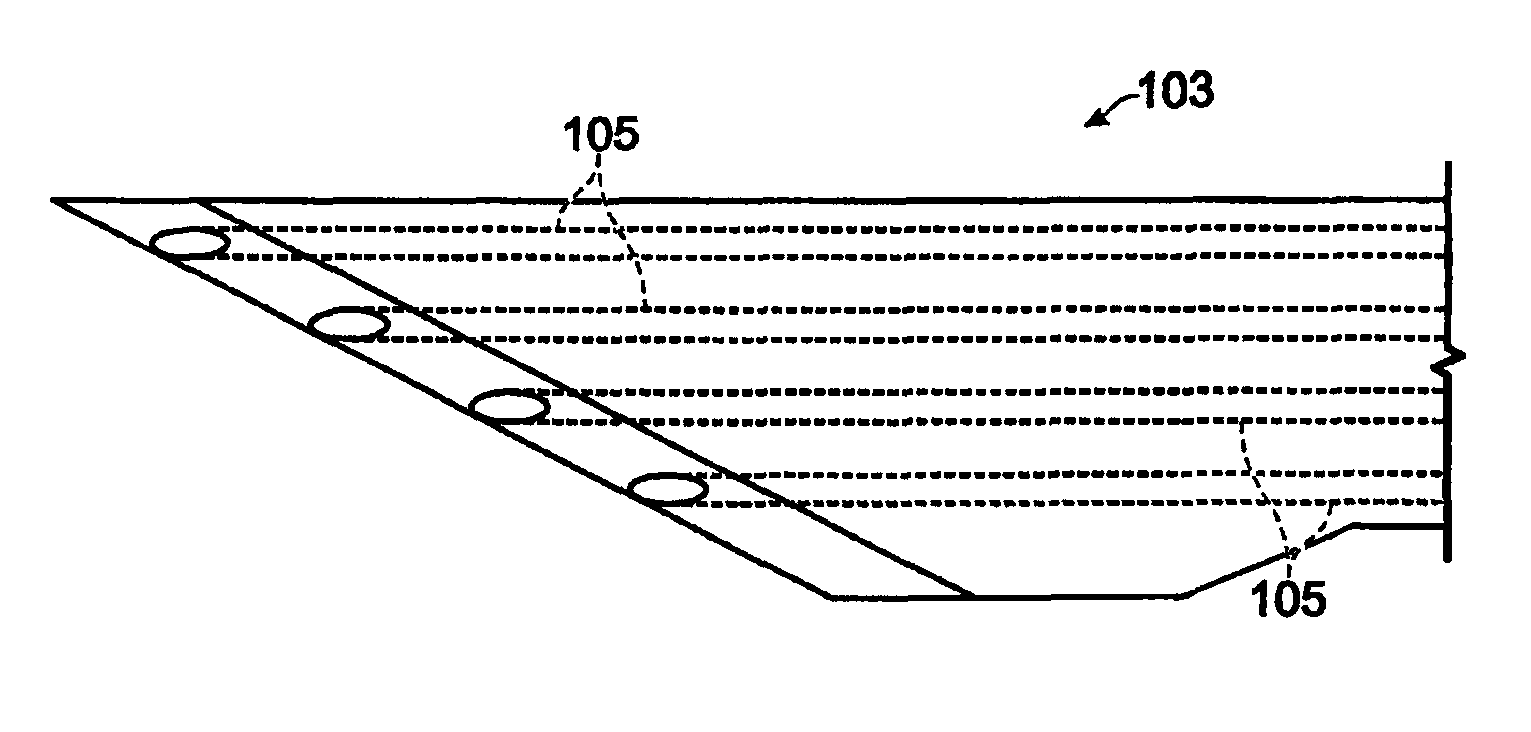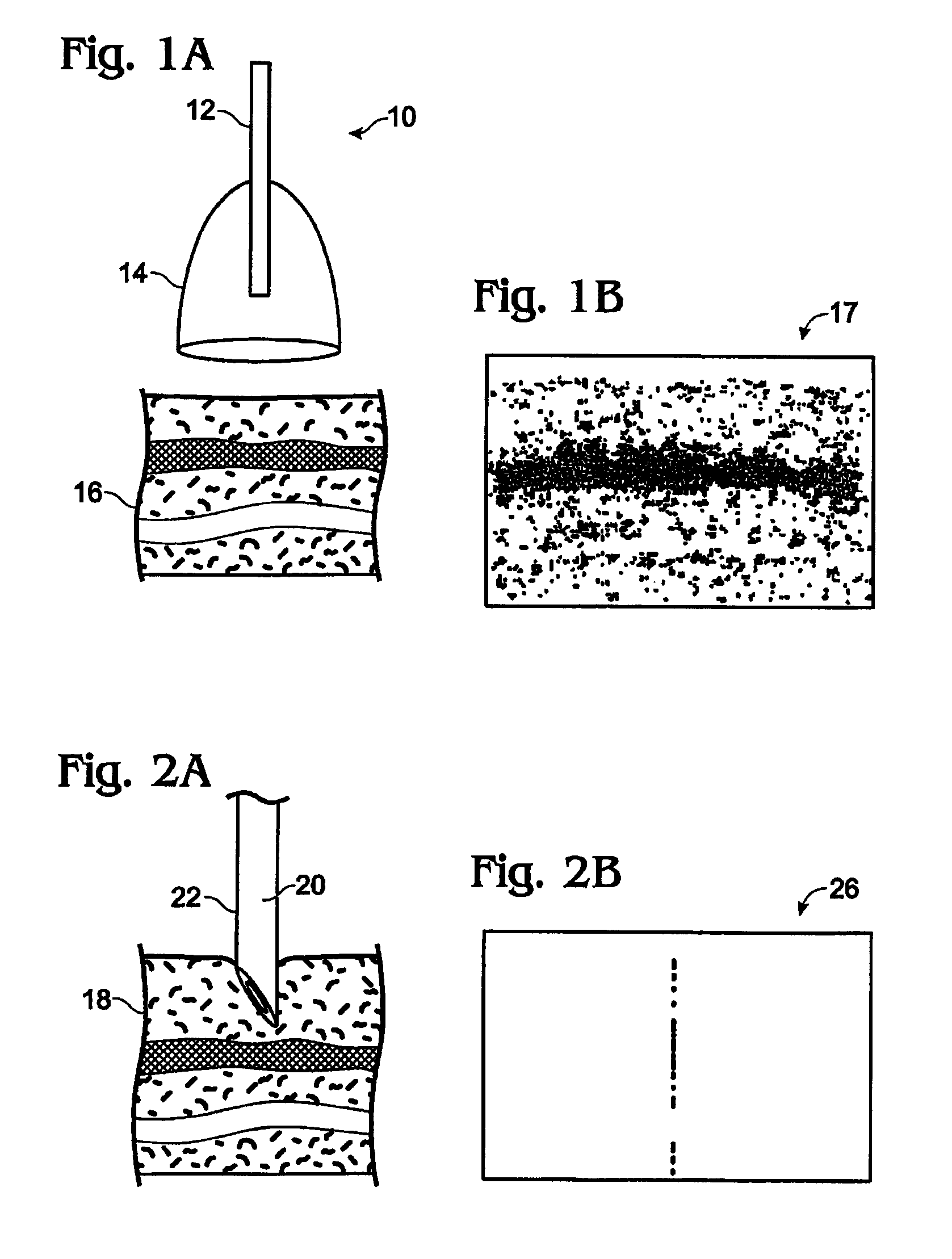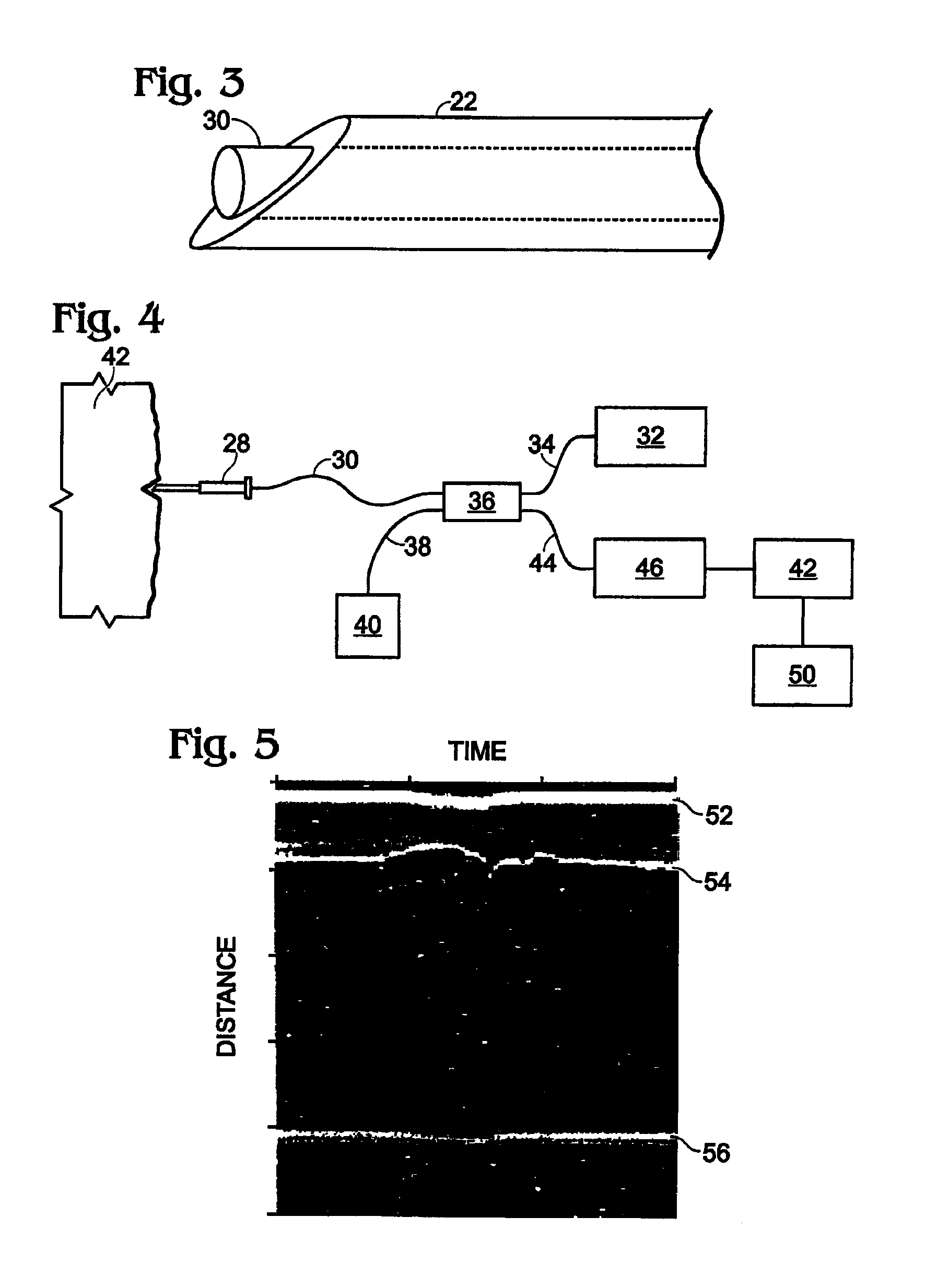Tissue structure identification in advance of instrument
a tissue structure and tissue technology, applied in the direction of instruments, catheters, incision instruments, etc., can solve the problems of severing injury, affecting the sensation or motion control of biopsy patients, and often damaging important tissue inadvertently
- Summary
- Abstract
- Description
- Claims
- Application Information
AI Technical Summary
Benefits of technology
Problems solved by technology
Method used
Image
Examples
Embodiment Construction
[0033]The method and apparatus of the present invention uses optical fibers aligned along a needle, scalpel or other mechanical cutting tool to both transmit and receive optical information directly in front of the cutting surface. OCDR is used to determine the depth of boundaries immediately in advance of a cutting surface such as a needle tip or scalpel blade. This information can be used to alert either a medical professional or a surgical robot to the presence of an upcoming boundary and possibly identify the tissue.
[0034]The basic concept of prior art OCT 10 is illustrated by FIGS. 1(a) and 1(b), which shows a typical test fiber 12 and associated distal optic 14 in relation to a tissue sample 16 to be scanned. This prior art system, which does not mechanically penetrate the tissue, can produce a two-dimensional tomographic image 17 of relatively limited depth of, for example, 1-2 millimeters.
[0035]In contrast, the apparatus for identifying tissue structures ahead of a mechanica...
PUM
| Property | Measurement | Unit |
|---|---|---|
| depth | aaaaa | aaaaa |
| diameter | aaaaa | aaaaa |
| diameter | aaaaa | aaaaa |
Abstract
Description
Claims
Application Information
 Login to View More
Login to View More - R&D
- Intellectual Property
- Life Sciences
- Materials
- Tech Scout
- Unparalleled Data Quality
- Higher Quality Content
- 60% Fewer Hallucinations
Browse by: Latest US Patents, China's latest patents, Technical Efficacy Thesaurus, Application Domain, Technology Topic, Popular Technical Reports.
© 2025 PatSnap. All rights reserved.Legal|Privacy policy|Modern Slavery Act Transparency Statement|Sitemap|About US| Contact US: help@patsnap.com



